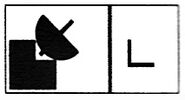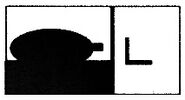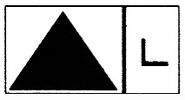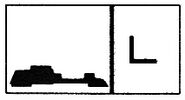| | |
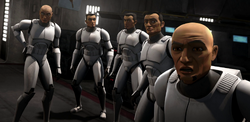
Clone trooper platoon
A platoon was a small-scale military unit, typically consisting of a few dozen soldiers organized into squads and commanded by a lieutenant.
Galactic Republic[]
In the Grand Army of the Republic, a standard platoon of clone troopers consisted of four squads, each led by a sergeant, a total of thirty-six soldiers, led by a lieutenant, giving a total of forty-one clones to a platoon. The platoons were known to be under the established strength due to battle losses. Four such platoons formed a company.
Among the clone commandos of the Special Operations Brigade, however, the equivalent unit was a troop consisting of five four-man squads and just twenty men.
There were also platoons of twenty-four troopers in the Army.
Galactic Empire[]
Imperial Army[]
In the Imperial Army, the basic structure of the standard platoon remained very close to what it had been in the GAR: four squads, each consisting of eight men plus a sergeant, with four platoons forming a company; but whereas under the Republic the platoon's commanding Lieutenant had been included within the 36-man detail, he was now supernumerary along with a Sergeant Major who served as platoon adjutant, for a total of thirty-eight personnel.[1]
A platoon was the smallest unit authorized to request fire support from friendly artillery, although typically these requests first had to go through the unit's parent battalion headquarters, which either allocated resources or passed the request higher up the chain of command. If there was time before a battle to plan a battalion commander might assign an artillery section under his control to a specific platoon, a process known as "grafting" which guaranteed the platoon immediate fire support upon request. Additionally a large number of platoons could be "grafted" to a single artillery or armor company, with the company commander allocating fire support requests as he saw fit.[1]
Army platoons could be augmented as per their Order of Battle (OB), however whereas larger units adhered to this doctrine more closely in practice there was more flexibility when augmenting platoons. Where possible the organizational chart was followed but it was quite common for commanders to swap men and equipment between different platoon types. Equipment was often over-ordered at the company level and reinforcements assigned to the wrong unit were "adopted" by their new unit. The result was that platoons were the least standardized unit in the Imperial Army, with some packing as much firepower as an entire company.[1]
Line Platoon[]

The line platoon was the standard light infantry formation of four line squads for a total of 38 troopers. Prior to combat, the lieutenant was suppose to assign his sergeant major to the squad that would come under the most pressure, and move between squads as the battle dictated. In practice this tended to result in a very short lifespan for the lieutenant, with those who survived falling into two general types. The first were the more pragmatic lieutenants who stayed with one squad during combat and commanded the platoon through their comlink and other less-sophisticated communication methods. The second were simply quite tough. Officially it could be augmented with four additional line squads.[1]
Assault Platoon (Heavy Weapons Platoon)[]

This unit was made up of two line squads and two heavy weapon squads, the latter usually armed with heavy repeating blasters. Officially its OB added first two armor sections and then two additional line squads, but unofficially many simply included more heavy weapons details to their standard strength. This could just be a single medium repeating blaster detail, or up to three medium repeating blaster or two heavy repeating blaster details. Thus the platoon could have a total strength anywhere from 38 to 47 troopers, with 41 being the most common, before official augmentation took place.[1]
Repulsorlift Platoon[]

This platoon contained three repulsorlift squads and one heavy weapon repulsorlift squad which, along with the command element, numbered 56 troopers and 11 vehicles. The command element served as mobile command base and coordination center and consisted of two modified light transport vehicles with heavier armor and more powerful repulsors to compensate. In combat the lieutenant's vehicle operated from where he could best direct the platoon while the sergeant major's was assigned to the lead squad. The platoon also included a support vehicle which carried spare parts and eight technicians, operated by a crew of four (who doubled as mechanics). Augmented platoons include two more repulsorlift squads and two more heavy weapons repulsorlift squads.[1]
Heavy Weapons Repulsorlift Platoon[]

The heavy weapons repulsorlift platoon was the same as a standard repulsorlift platoon, including the command element and support staff, but was entirely composed of heavy weapon repulsorlift squads. Through the augmentation process this platoon could essentially double in size with four additional heavy weapon repulsorlift squads added.[1]
Scout Platoon[]

A scout platoon consisted of two scout lances, known together as a scout squadron, and two line squads. While the lieutenant was officially in charge of the entire platoon, tradition had him commanding the scout squadron, replacing the sergeant in the command lance, while the sergeant major commanded the infantry. A baseline scout platoon had 29 men and 10 speeder bikes, while a fully augmented platoon had three more scout lances and a third line squad for a total of 53 troopers and 25 speeder bikes.[1]
Armor Platoon[]

Armor platoons were composed of repulsorlift tanks or their equivalent vehicle or walkers. Consisting of four armor sections the platoon either had four heavy vehicles or eight medium or light ones, with the heavy configuration being the most common, along with a modified medium command tank in which the lieutenant rode. The command tank which often featured a second crewman to wield a heavy repeating blaster in a secondary gun cupola, while the sergeant major either rode in another tank or protected the platoon's support element. Two Heavy Transport Vehicles carried the platoon's supply of spare parts and components as well as four technicians; each HTV was crewed by three crewmen who doubled as mechanics. Together a platoon consisted of 34 to 42 men, 5 to 9 combat and 2 support vehicles, and could be augmented to include four more armor sections.[1]
Artillery Platoon (Artillery Line)[]

This platoon had four artillery sections with either four heavy or medium artillery pieces or eight light vehicles. The standard complement was 38 men and 4 to 8 vehicles. It could be augmented with two additional artillery sections, then a line squad and a heavy weapons squad.[1]
Special Mission Platoon[]

Special Mission platoons were organized much like standard line platoons with 38 troopers, but were designed around accomplishing missions which required a few elite men rather than normal military operations. They were composed of two sharpshooter squads, an engineering squad and a heavy weapons squad, with the augmentation process adding a second engineering squad, two more sharpshooter squads, and a second heavy weapons squad to essential double it in size. In addition these squads were often split in equal sub-units, containing troopers of all squads for greater flexibility, and could be cross-attached to other units. Special mission platoons were often used to prosecute delicate missions such as assassinations, Rebel Activity Clearance and Political gain operations.[1][2]
Stormtroopers[]
In the Stormtrooper Corps, it was possible that some stormtrooper units were organized along the same four-squad platoons structure as the line forces of the GAR and the Imperial Army, but there is better evidence for a platoon-strength unit of forty-five men: such formations probably consisted of five squads in the manner of the troop used as the platoon-size unit within the GAR's earlier Special Operations Brigade, but with the squad strength enhanced to match the Army's standard nine-man unit.
The nine-man stormtrooper squad was certainly known to have been standard by 9 ABY, but it is known that squad size could be smaller than this, although it is unclear whether this indicated any significant variation in the overall size of the platoon, or if variation tended to be within a relatively stable platoon matrix. A forty-five man platoon might have consisted of squads of nine, five or three men, assuming that the squad strength was equal, which was not of course the case in army heavy weapons platoons.
Specialist stormtroopers were certainly organized into unusual unit sizes: Scout troopers were organized in 10-man squadrons or 22-man platoons as just mentioned, while spacetrooper platoons consisted of forty troopers, operating in conjunction with the five-man crews of Gamma-class assault shuttles.
By 22 ABY, however, forty troopers organized in ten four-man squads comprised the strength of a full company in the 501st Legion, now fighting for the Empire of the Hand. It therefore appears that the platoon had at least partially disappeared by this date in at least some stormtrooper units, although it is not clear when this process began.
Other examples[]
- The Balawai militia used platoons of 24 men.
- Yuuzhan Vong warriors also used platoons.



